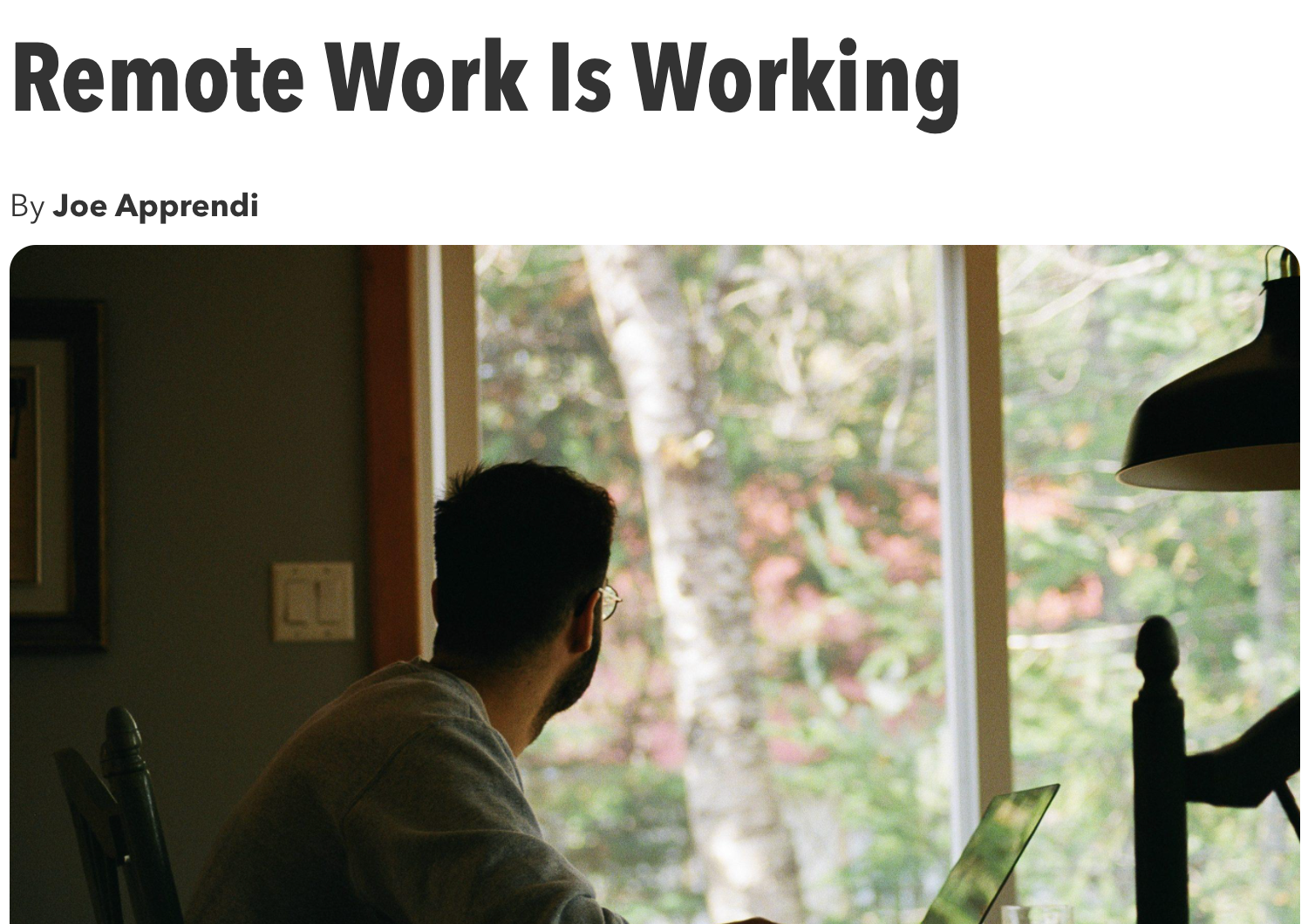
Omicron became the dominant COVID variant in the US towards the end of 2021. It brought with it a return to remote work, something many CEOs and Fortune 500 companies had been rolling back at that point despite positive data around productivity and worker preference. With the Omicron variant now receding, will those same leaders once again roll back the strategic shift towards remote work models?
Over this past year there have been multiple studies seemingly demonstrating productivity gains associated with remote work. Between the second quarter of 2020 and the second quarter of 2021, labor productivity increased by 1.8 percent compared with an average annual increase of 1.4 percent from 2005 to 2019. Productivity in Q4 alone rose 6.6 percent, the biggest gain in over a year.
A typical study suggests that remote workers spend 10 minutes less a day being unproductive, work one more day a week, and are 47% more productive. Yet, the benefits of remote work are not so cut and dry. Questions around conflicting data as well as issues ranging from security to remote tech investment costs muddy the picture.
This is particularly true among CEOs and senior executives.
One of the biggest issues with remote work is the data itself. For example, a recent Stanford study found that working from home increased productivity among a group of 16,000 workers by 13%. Attrition rates halved during the same period. Researchers at Chicago Booth and the University of Essex, conversely, found productivity at a large IT-services company decreased by 20% after employees began working from home.
This kind of conflicting data makes it hard to gauge productivity gains associated with remote and hybrid remote work models. It is perhaps only natural, then, for business leaders to fall back on their instincts. In related news, a recent survey found that 75% of executives want to return to office as compared to only 34% of workers. This type of large split is consistent across studies.
One of the oft-cited reasons for remote work hesitancy is security. Studies show that 73% of C-suite and IT leaders think remote work poses a security risk. Concerns range from the use of open WIFI Networks and vulnerable personal devices to password sharing and unencrypted file sharing.
While remote work does pose security challenges, it’s not clear whether those challenges outweigh productivity gains. Particularly as simple best practices can minimize risk. These include increasing VPN capacities, more rigid protocols and greater surveillance. Some of these workarounds, however, pose entirely new sets of challenges.
Employee surveillance software, for example, has exploded as remote work surged. Yet, the expansion of worker surveillance brought with it significant pushback from employees.
“Companies have been scrambling,” Brad Miller, CEO of the monitoring software maker InterGard, told Bloomberg during the early days of the pandemic. “They’re trying to allow their employees to work from home but trying to maintain a level of security and productivity.”
Another objection from business leaders involves the investment costs associated with remote work technology. However, they must weigh this concern against the cost savings associated with in-person work environments. These can range from real estate fees to overhead to commuting and more. The assumption is that eventually there will be some kind of balance achieved between these two factors. At that point it will (once again) come down to the productivity question.
A clear cost/benefit analysis of remote work costs versus productivity gains is not available. Yet, the hope is that the picture will become clearer over the next several years. As the picture become clearer it is incumbent upon enterprises to seriously gauge that data and take actions that drive enterprise value, even if it involves substantive change.
“There’s no replacement for face-to-face collaboration, but we have also learned a great deal about how we can get our work done outside of the office without sacrificing productivity or results,” Apple CEO Tim Cook told staff last year, “All of these learnings are important. When we’re on the other side of this pandemic, we will preserve everything that is great about Apple while incorporating the best of our transformations this year.”
That sort of thinking seems to be quietly gaining traction in the tech category. Dropbox and Atlassian now allow employees to work from satellite locations instead of a centralized HQ . Coinbase, GiLlab and HashiCorp, have abandoned the idea of headquarters altogether and instead bill themselves as “remote-first” workforces.
All employees depend upon an organization’s willingness to invest in processes and technologies that drive business value and revenue. This includes a willingness to reinvent business models.
When it comes to remote work, businesses leaders need to “lean in” to IT architectures and technologies that solve for remote work concerns, align with business strategies and don’t sacrifice productivity gains.
Change hesitancy often comes down to perceptions of personal autonomy. As a result, people have a tendency to repeat behaviors, even bad ones. Unfortunately, this also applies to enterprise leadership.
In the end employers need to put their egos aside and up their investment in technology enablement and productivity measurement. Not all employees have an innate desire to be in-office. And that’s okay.
Employees, in turn, need to recognize that with autonomy comes accountability. Accountability may impinge upon their privacy. Remote work models will necessarily invite changes in processes and monitoring techniques that employers require to support this shift. It’s a tradeoff and that, too, is okay,
The world that existed before March 2020 is gone forever. Employees and employers must strive to find competitive advantages in the new remote future. That means apprising new data in good faith and being intentional about tradeoffs.